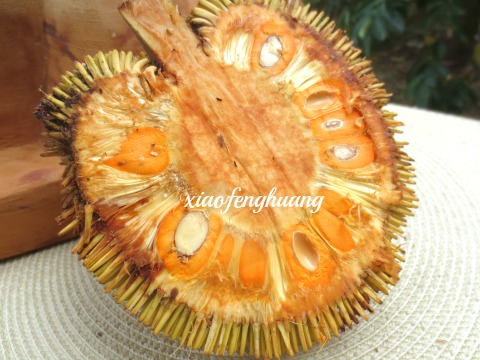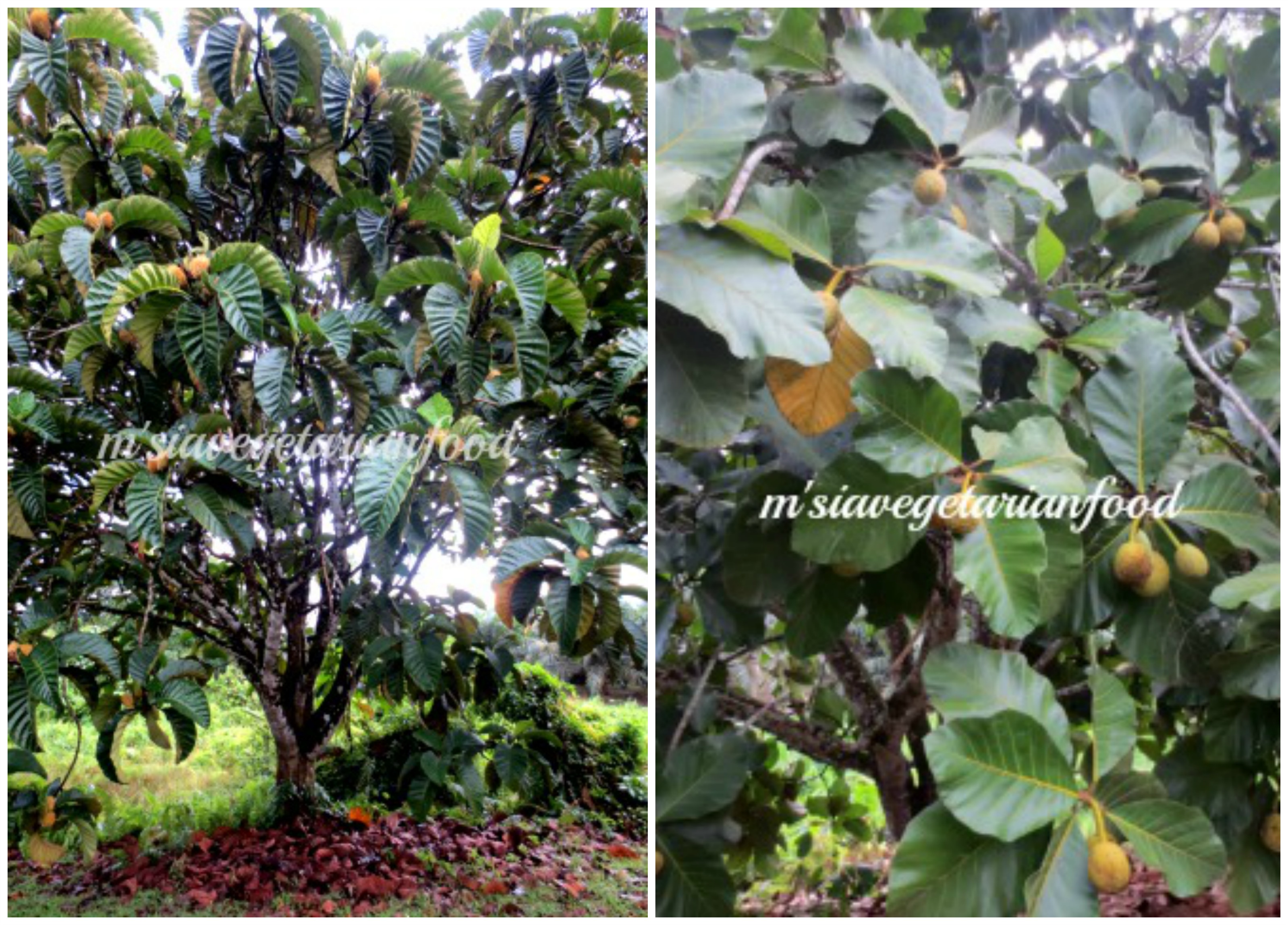Artocarpus is a genus of trees found in South-eastern Asia and in the Pacific.
The fruits in the genus of Artocarpus are terap, tempunik, pingan, bintawak, tekalong, terap bulu, cempedak, nangka and kemangsi. In this post, we will just focus on terap, terap bulu and bintawak.
At first glance of terap and terap bulu, people tend to think of them as jack fruit or cempedak except they have rounder body than the jack fruits. The fruit pulp looks like that of the jack fruit but it is white, unlike that of the jack fruit which is orange or yellow. Its flesh is much softer and creamy.

One of my favorite jungle fruits is this wild pedalai which is endemic to Borneo. Its pulp is so sweet, just like milk shake. Its white pulp is so soft that it melts in the mouth, just like drinking milk shake, simply delicious. Its ID is not clear, probably is a variety of terap bulu/pedalai. It has very fleshy pulp and thick skin without long hair which is different from the regular terap bulu (pedalai). I was told by the vendor that it was called pingan but later I found out that pingan fruit could not be as big as terap. Pingan is mini terap, almost 100% wild. I may update on pingan and terkalong later, depending on my luck.

Right – Wild terap, ancestor of terap/buah langsay
Tekalong shown above is a small type of wild terap, measuring up to 10 x 6 cm. It has seeds with white pulp, just like terap. The ripe fruit has strong smell. The bark is used by natives for making house-walls and for strings and in clothing.
The second picture above shows the wild terap which is known to be ancestor of cultivated terap. It is smaller in size, measuring up to 14 x 8 cm. The fruit is pear shaped or oblong shaped like the cempedak and becomes brownish on ripening. It tastes sweeter than the regular terap without the strong smell. Its Hakka name is Pulong dang.
Terap trees are mostly semi-wild though there are still a lot in the jungle. In the past there had been a limited supply of this fruit in the markets. Nowadays we are seeing more of these fruits in the markets probably due to more semi-wild trees are fruiting in the villages.

The picture above and below show terap in Malay or as marang in the Philippines. Its botanical name is Artocarpus odoratissimus Blanco. As the name implies, it has sweet pungent odor but the pungent odor is in the skin, not in the fruit pulp. It is oblong, about 20 x 15 cm. Best harvest before it is over-ripe and falls to the ground and ends up a broken fruit instead. The fruit pulp is sweet and rich in flavor. The seeds are edible after boiling or roasting.

On ripening, terap skin remains green with very dense, straight green protrusions on its skin. A sweet pungent odor becomes stronger as it ripens.
The picture below shows terap bulu (Malay), Pedalai (Iban). Its ID is Artocarpus sericicarpus Jarret. It is a hairy version of the regular terap but without the odor. Depending on the variety, some taste as good as the terap but one variety has thinner pulp than the regular terap.

Their seeds are edible after boiling or roasting. The above three have white fleshy pulp. Terap fruit is best collected from the tree before it falls on the ground and get crushed.

The picture above shows another fruit of same genus in the same family of Moraceae – buah bintawak/bintawa. Its botanical name is Artocarpus anisophyllus Miq. The fruit measures up to 12 X 9 cm and looks exactly like terap except it is yellowish brown in color and the pulp is small, orange and less fleshy with a mild aroma.
Bintawak bead-like pulp is pretty to look at and it tastes as good as it looks but due to its thin aril, it is less popular than the terap bulu and terap. Unripe bintawak can be eaten raw and the immature pulp is less sweet but crunchy.
Just like all the fruits with the same genus of Artocarpus, its seeds are edible after boiling or roasting.

All these three common terap can be found in the markets. The rest are quite rare so I will probably keep them for another post.

Right – Terap tree (Notice the difference in their leaves).
Most people are quite familiar with the nangka and cempedak. They look and taste alike but differ in size only. Nangka is big, may measure up to 25 x 50 cm whereas cempedak may measure up to 15 x 25 cm only.
So my dear Sarawakians and Sabahans, don’t forget you have a whole lot of goodies in your very own land.
Our fruity land,
love it ,
preserve it,
enjoy it!
Copyright claim – Do not crop any pictures from malaysiavegetarianfood.com.Do not share our pictures without any watermarked signature on them.Excerpts from our articles to be credited to malaysiavegetarianfood.com.
